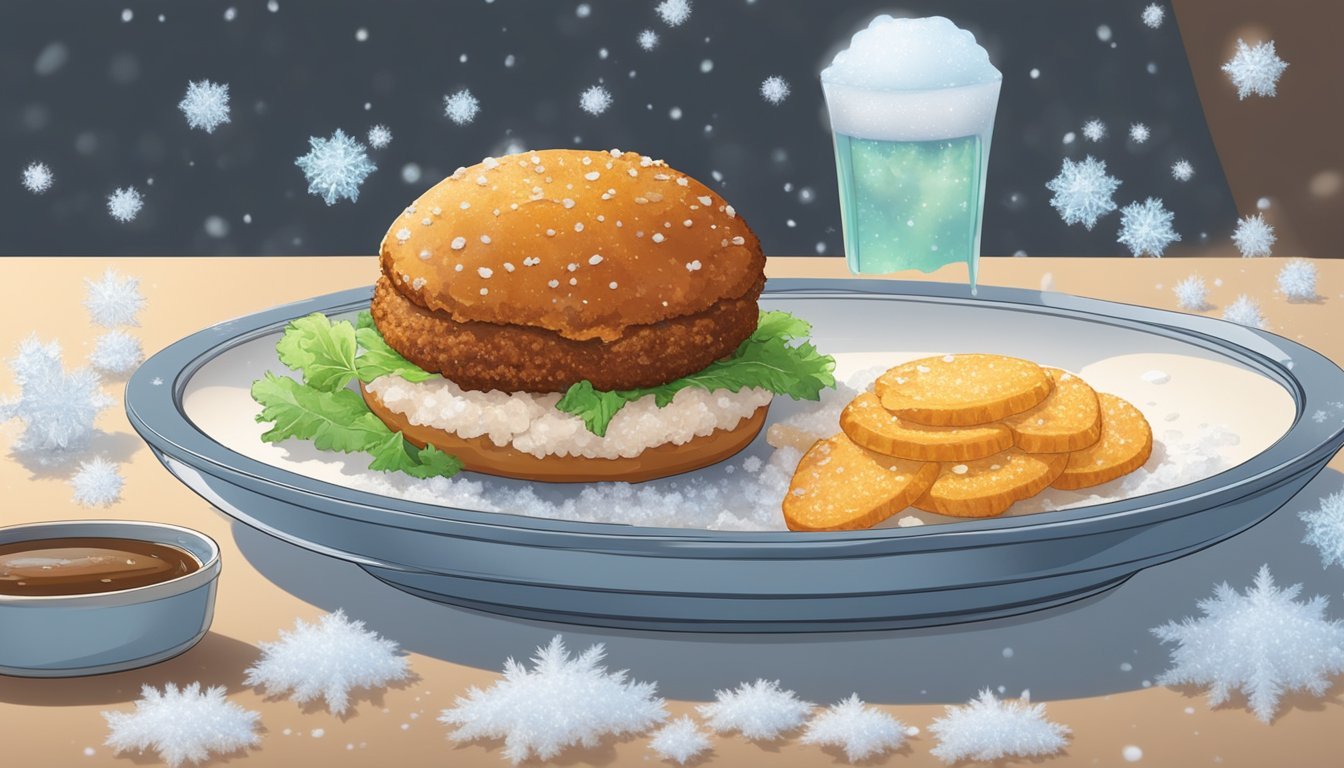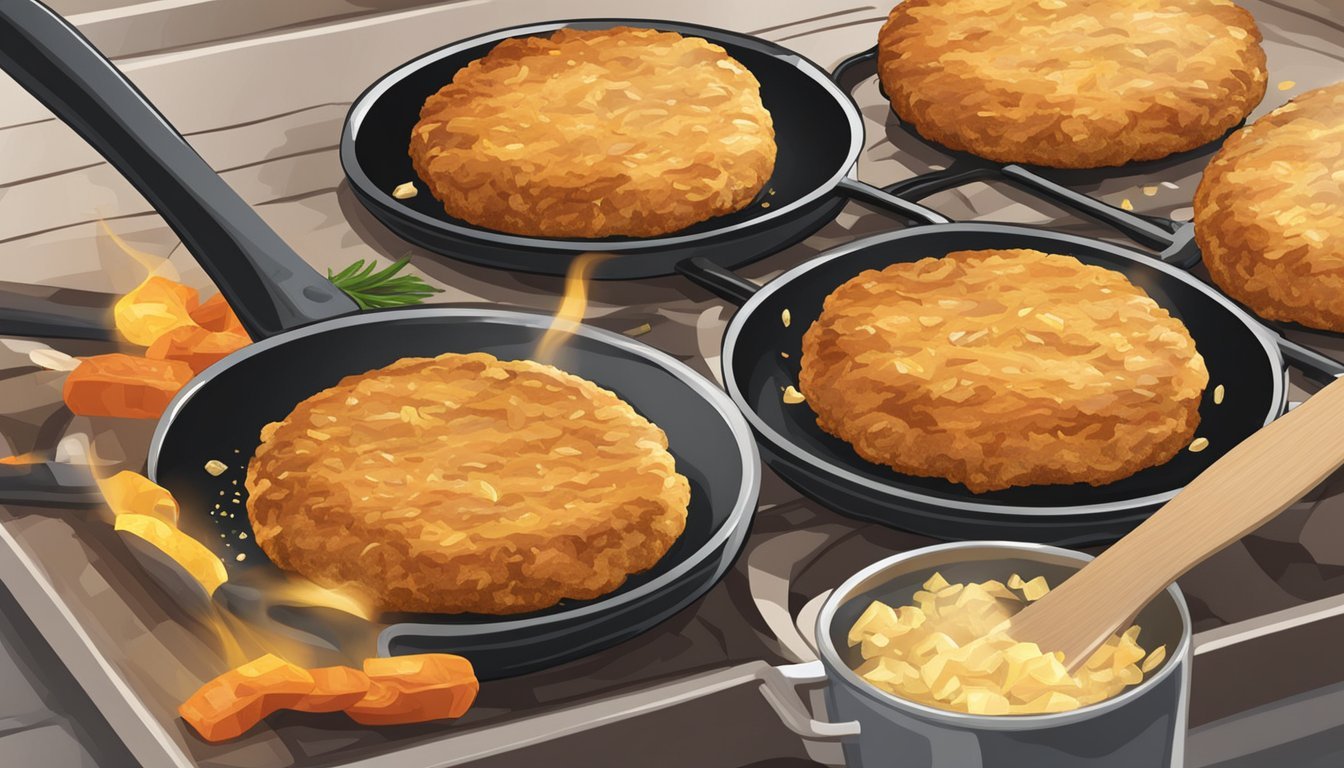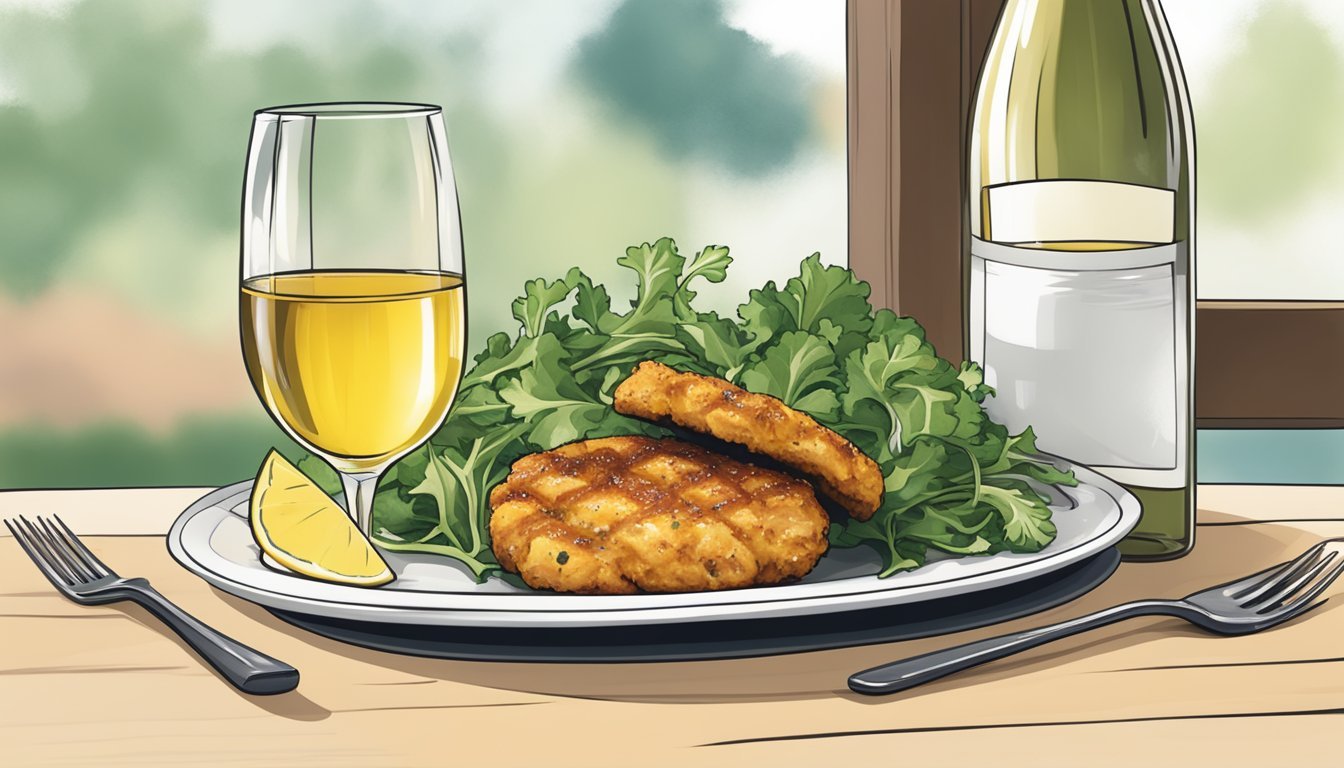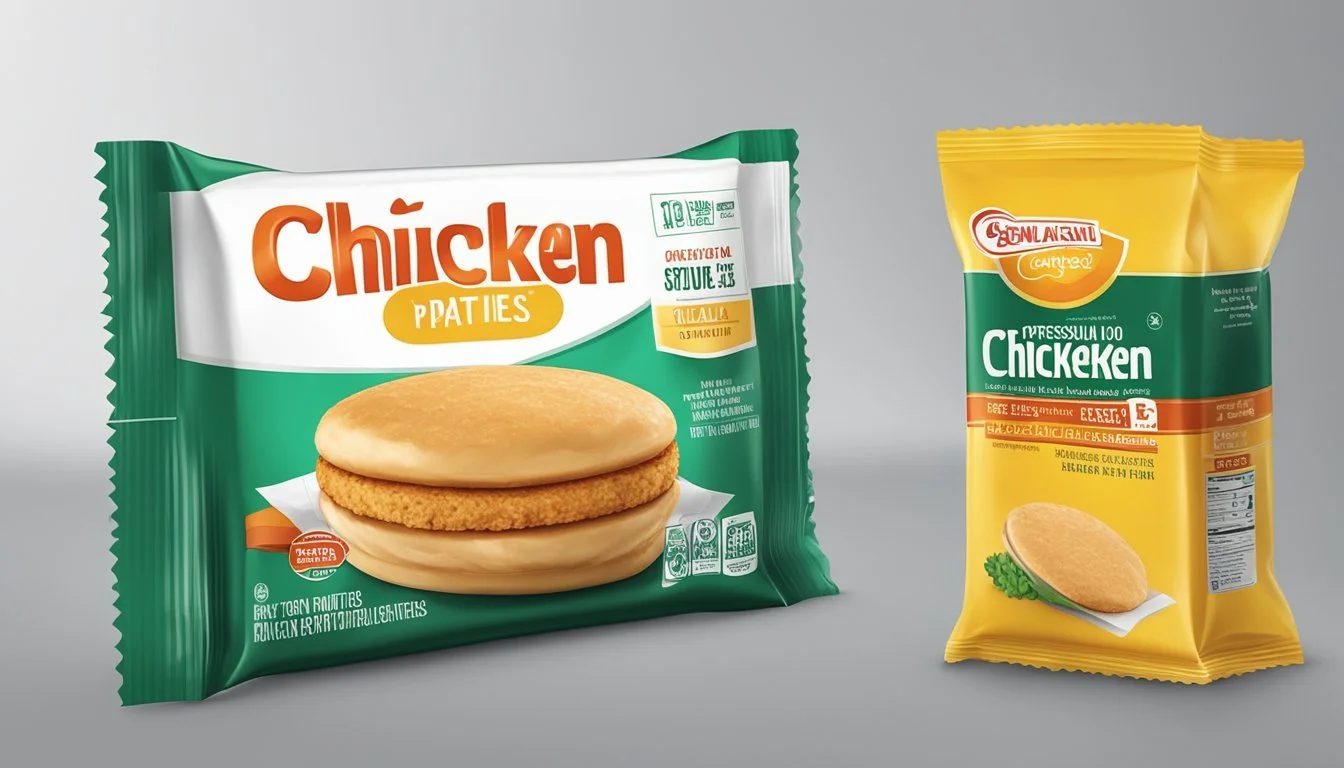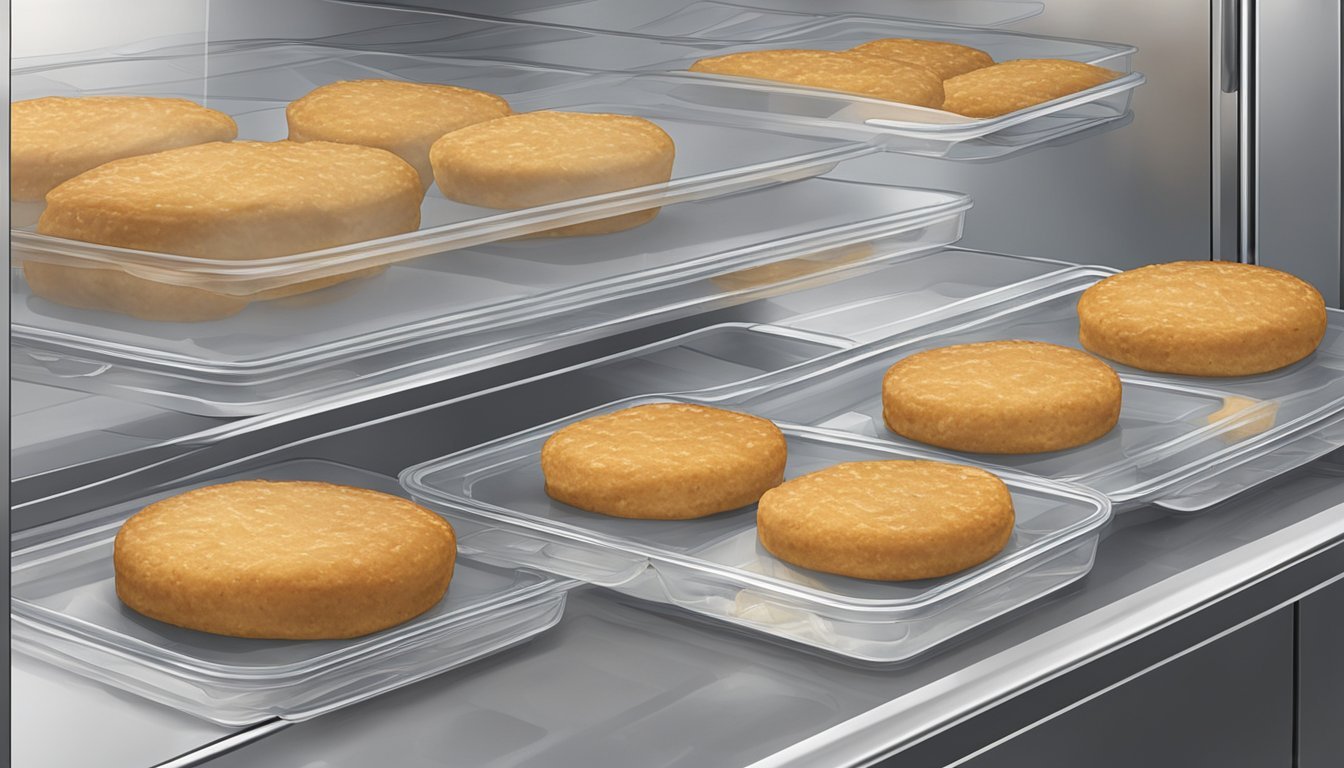How Long Do Chicken Patties Last?
Shelf Life and Storage Tips
Wondering how long chicken patties last? Frozen chicken patties provide a convenient and tasty meal option, but it's important to know how long they remain at their best. Chicken patties can last up to 3 to 4 months in the freezer without significant quality loss. During this time, they can maintain their taste, texture, and nutritional value, making them a reliable choice for quick meals.
When properly stored and sealed, chicken patties can stay safe to eat even beyond the 3 to 4-month mark. However, for the highest quality experience, consuming them within this period is recommended. Storing them correctly will ensure they do not suffer from freezer burn, which can affect their overall taste and texture.
Understanding food safety and proper storage is essential for maintaining the peak quality of your chicken patties. By following these guidelines, you can enjoy delicious and safe meals whenever you need a quick fix.
Understanding Chicken Patties
Chicken patties are a popular food item enjoyed for their convenience and versatility. They come in various types and offer different nutritional benefits depending on their ingredients and preparation methods.
Composition and Varieties
Chicken patties are typically made from ground chicken, which can be seasoned with various spices to enhance flavor. Common ingredients include salt, pepper, garlic powder, onion powder, and sometimes herbs like parsley or cilantro.
Homemade chicken patties allow for greater control over the ingredients, making it possible to use leaner cuts of chicken and limit the amount of added fat or salt. This can result in a healthier alternative to store-bought options.
Frozen chicken patties, on the other hand, are a convenient option, often pre-seasoned and ready to bake or fry. They may contain additional preservatives to maintain shelf life, as well as binders or fillers to enhance texture and flavor.
Different varieties include breaded, grilled, or even spicy versions. The method of preparation (oven-baked, pan-fried, or grilled) can also affect the taste and texture of the final product.
Health and Nutrition
Chicken patties provide a source of protein and can be part of a balanced diet. The nutritional content can vary significantly based on the ingredients used and the method of preparation.
Calorie content can range widely. A homemade patty made with lean ground chicken may have fewer calories compared to a commercially prepared frozen patty, which might include added fats and fillers.
In terms of nutrients, chicken patties can contribute to daily protein intake but may also contain varying levels of fat and sodium. Reading the nutritional labels on frozen patties or controlling ingredients in homemade versions can help manage these factors.
For those looking for a healthier alternative, it is recommended to choose patties made from skinless, lean chicken breast and minimal added fats. Baking instead of frying can also reduce overall calorie and fat intake.
Chicken patties offer versatility in meals while providing nutritional benefits, especially when made with thoughtful ingredients and preparation methods.
Proper Storage Practices
Properly storing chicken patties ensures their safety and extends their shelf life. Factors such as temperature and packaging significantly impact their quality.
At Room Temperature
Chicken patties should never be left at room temperature for extended periods. Bacteria can multiply rapidly at temperatures between 40°F and 140°F (4°C and 60°C), making the food unsafe to eat.
If chicken patties are left out for more than two hours (or one hour if above 90°F/32°C), they should be discarded to prevent foodborne illnesses.
Always aim to refrigerate or freeze chicken patties as soon as possible after cooking to maintain best quality and safety.
Refrigeration
Refrigerating chicken patties helps extend their shelf life several days. Cooked chicken patties should be stored in the refrigerator at or below 40°F (4°C).
Use airtight containers or wrap them tightly in aluminum foil or plastic wrap to prevent moisture loss and minimize odor absorption.
Properly stored in the refrigerator, chicken patties will remain safe to eat for up to 3-4 days.
Labeling the storage containers with the date can help keep track of their expiration.
Freezing Techniques
Freezing is the best method for long-term storage of chicken patties. By following simple steps, you can ensure maximum shelf life and quality.
Firstly, allow the patties to cool completely. Wrap each patty individually in plastic wrap or aluminum foil. Place the wrapped patties in a freezer bag or vacuum-seal them to reduce the risk of freezer burn.
Ensure to label the bags with the date of freezing. Properly stored, chicken patties can last in the freezer for up to 9 months.
Maintain consistent freezer conditions at 0°F (-18°C) or below for the best quality.
Freezing and Thawing Guidelines
Properly freezing and thawing chicken patties ensures they maintain their quality and safety. Following these steps will help you store chicken patties correctly and thaw them safely.
How to Freeze Chicken Patties
When freezing chicken patties, start by selecting fresh, high-quality patties. Wrap each patty individually in plastic wrap or aluminum foil to prevent freezer burn. Place the wrapped patties into a freezer bag and remove as much air as possible before sealing.
Label and date the freezer bag to keep track of storage time. Store the patties in a freezer set at 0°F (-18°C) or lower. Homemade chicken patties can last up to 1-3 months when stored properly. Keeping the freezer organized helps ensure patties are used within their optimal timeframe.
Thawing Safety and Methods
To thaw chicken patties safely, move them from the freezer to the refrigerator. Allow several hours to a full day for thawing, depending on the thickness of the patties. Avoid thawing at room temperature to prevent bacterial growth.
Alternatively, for quicker thawing, place the wrapped patties in a sealed plastic bag and immerse in cold water. Change the water every 30 minutes to keep it cold. Never use hot water as it compromises food safety. For immediate cooking, patties can be thawed on a microwave’s defrost setting. Use thawed patties within 1-2 days to maintain safety and quality, following foodsafety.gov guidelines.
Cooking and Preparation Techniques
Proper cooking and preparation techniques are essential for ensuring that chicken patties are thoroughly cooked and have an appealing texture and flavor. These techniques also help maintain food safety standards.
Cooking from Frozen
Chicken patties can be cooked directly from frozen, making them a convenient meal option. Bake frozen patties in a preheated oven at 375°F (190°C) for 25-30 minutes. Use a baking sheet lined with parchment paper to prevent sticking. To promote even cooking, flip the patties halfway through using a spatula.
Air fryers and grills can also be used. For air frying, cook at 360°F (182°C) for 12-15 minutes, flipping halfway. Grilling frozen patties can take a bit longer, approximately 15-20 minutes, ensuring that both sides are well-browned. Always check that the internal temperature reaches 165°F (74°C) using a meat thermometer for safety.
Determining Doneness
Ensuring chicken patties are fully cooked is crucial for both taste and safety. A meat thermometer is the best tool for this, and the internal temperature should reach 165°F (74°C).
Visual cues can also be helpful; look for a crispy exterior and ensure there are no pink areas in the meat. If baking, using a convection oven can promote more even cooking due to the hot air circulation. When cooking on a grill or air fryer, flipping the patties halfway through ensures both sides brown evenly. Finally, let the patties rest briefly after cooking to allow juices to redistribute, enhancing flavor and moisture.
Serving Suggestions and Pairings
Chicken patties pair well with a variety of side dishes, which can transform them into a complete and satisfying meal. From classic accompaniments like mashed potatoes to creative recipes such as chicken patty sandwiches, the options are numerous and delightful.
Classic Accompaniments
Classic side dishes like mashed potatoes and coleslaw enhance the taste of chicken patties. Mashed potatoes provide a creamy texture that complements the crispy exterior of the patties. A dollop of gravy or a side of buttered vegetables can add additional flavor.
Fresh salad, such as mixed greens with a light vinaigrette, offers a refreshing contrast to chicken patties. The crispness of the salad adds a delightful crunch, paired perfectly with the tender patties.
Another delicious option is casseroles, which can incorporate ingredients like cheese and vegetables to create a hearty side dish. Green bean casseroles, in particular, are a favorite and work well with chicken patties.
Creative Recipe Ideas
For a gourmet twist, chicken patty sandwiches are an excellent choice. Place the patties between toasted ciabatta rolls with arugula, sliced tomatoes, and a swipe of aioli for a sophisticated meal. The combination of fresh vegetables and crispy patties is irresistible.
Salads with a variety of ingredients also work beautifully. A chicken patty Caesar salad, using chopped patties, romaine lettuce, croutons, and Parmesan cheese, is both nutritious and tasty.
Another inventive idea is to incorporate chicken patties into soups and stews. Chopped or crumbled patties add a protein boost and unique flavor to these dishes, making them heartier and more satisfying.
Using different seasonings such as garlic, dill, and lemon juice, chefs can personalize chicken patties to match other creative dishes, offering a rich and aromatic experience.
Safety and Quality Considerations
Understanding how to recognize spoilage and adhere to best before and use-by dates is crucial to ensure the quality and safety of cooked chicken patties. This helps to maintain peak quality and reduces the risk of foodborne illness.
Recognizing Spoilage
Spoilage in cooked chicken patties often manifests through sensory changes. Signs of spoilage include an off-smell, which might be sour or ammonia-like, and any slimy texture on the surface. Additionally, any mold growth on the patties clearly indicates that they are no longer safe to eat.
Color changes are another indicator. Freshly cooked chicken patties should retain their original color, and any graying or greenish hues suggest spoilage. Always use proper storage methods. Refrigerate within two hours of cooking at 40°F (4°C) or below.
Best Before and Use-By Dates
Adhering to best before and use-by dates is essential for maintaining food safety and quality. These dates are set based on when the chicken patties are expected to remain safe to eat and at peak quality.
The USDA recommends consuming cooked chicken patties within 3 to 4 days of refrigerating. Always check the packaging for the manufacturer's guidelines. Following these dates helps prevent consuming food past its safe period. Keeping a log of purchase and cooking dates can help track and manage leftovers efficiently.
Tips for Preserving Quality and Flavor
Proper handling and seasoning can significantly impact the quality and flavor of chicken patties after freezing. Below are key tips that ensure optimal preservation.
Handling and Preventing Freezer Burn
Freezer burn can drastically affect the texture and taste of chicken patties. To avoid this:
Wrap each patty individually: Use plastic wrap or aluminum foil, ensuring no air gaps.
Double packaging: Place the individually wrapped patties in a freezer bag or airtight container.
Remove air from bags: Press out as much air as possible before sealing.
Label and date: Clearly label the bags with the current date to keep track of their storage time.
Additionally, storing chicken patties at a consistent freezing temperature will help maintain their peek quality.
Seasoning Tips Post-Freezing
Seasoning chicken patties after freezing can enhance their flavor and texture when reheated:
Egg wash: Before reheating, dip the patties in beaten eggs for better adherence of additional coating or seasoning.
Coating: Dust with flour or breadcrumb mixed with herbs and garlic powder to add texture and taste.
Quick mayo coat: Spread a thin layer of mayonnaise to retain moisture and improve richness before cooking.
By following these tips, the patties can retain their flavor, making them more enjoyable post-freezing.




